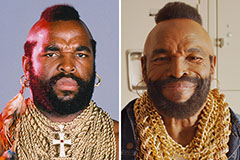copyright cash are becoming increasingly sophisticated, making it harder than ever to tell real money from fake. However, there are several tips you can use to spot counterfeits and protect yourself from falling victim to fraud. One important thing to remember is that counterfeiters often focus on copying specific features of genuine currency, such as the paper used, the design, and the watermarks.
Checking your money carefully under good lighting can help you discover subtle differences. Pay close attention to the ink used for the text, as counterfeits often use substandard inks that may fade. Also, feel the surface of the paper and look for embossed designs that are specific to genuine currency. If you notice any inconsistencies or suspicious details, it's best to assume it's fake.
Remember, if you have any doubts about the authenticity of a bill, it's always best to verify with your bank or a trusted financial institution.
Gauge Your Expertise: The Ultimate copyright Quiz
Ever questioned the mysterious world of imitations? Do you possess a keen eye for spotting fake goods? Now's your chance to put your knowledge to the test with our ultimate copyright quiz!
- Get ready to delve into the intricacies of fake creation
- Delve into common signs that expose a knock-off item
- Refine your ability to distinguish the genuine from the imitation
Prove yourself and discover your expertise level against others who think they know about counterfeits. Begin now!
Famous Quotes on Counterfeiting
The adage "Fake It 'Til You Make It" has become a mantra for hustle, but its roots delve into the ethically dubious world of counterfeiting. Legendary figures throughout history have explored on the appeal of imitation, often with insightful results. Some champion the idea that practice leads to mastery, while others caution the risks of fraud.
- Indeed, there are those who believe that the path to genuineness is paved with repetition
- Conversely, others argue that sincerity should always be the guiding principle.
Ultimately, the question of whether "Fake It 'Til You Make It" is a viable approach or a recipe for disaster remains a copyright that looks real printable matter of discussion.
Identify Deception: Can You Pass the copyright Money Test?
Have you ever questioned how to distinguish real money from fakes? Fabrication is a serious violation, and learning to identify copyright bills can be helpful. While experts use specialized equipment to reveal deceptions, there are some basic techniques you can learn to signal red flags.
Inspect the paper quality, look for uneven printing, and scrutinize closely the security features. Remember, a few simple verifications can help you avoid becoming someone who's taken advantage of.
- Remain vigilant when accepting large sums of cash.
- Confirm the authenticity of bills, especially if they seem suspicious.
- Inform any suspected copyright money to the authorities immediately.
Understanding copyright: Key Facts
copyright currency is often harder than you think to detect. It's not just about blatant counterfeits; sophisticated counterfeiters develop new methods to create bills that almost perfectly mimic the real thing. Be aware when handling cash, and understand strategies to identify potentially fraudulent currency.
- Inspect for unusual texture or weight
- Look for misaligned printing or blurry images
- Utilize specialized tools to identify fake ink
Remember, it's always best to be extra careful and consult with authorities if you suspect that a bill may be copyright.
Identifying Fraud
Protecting yourself from copyright money is crucial. Learn how to identify fake bills and coins by examining their details. Pay close attention to the paper's texture, the ink used, and built-in features like watermarks or microprinting. Exercise caution at the portrait – is it clear and sharp? Check for misaligned printing or blurry images, which can be telltale signs of a copyright.
- Genuine currency often has a slight raised feel due to intaglio printing.
- Study the design elements of your country's currency, including denominations and security features.
- Employ copyright detection pens, which react to certain inks used on copyright.
If you suspect a bill or coin is copyright, do not spend it. Report it to your local authorities immediately. By being vigilant and informed, you can help prevent the spread of counterfeiting.
 Jake Lloyd Then & Now!
Jake Lloyd Then & Now! Mr. T Then & Now!
Mr. T Then & Now! Ralph Macchio Then & Now!
Ralph Macchio Then & Now! Charlie Korsmo Then & Now!
Charlie Korsmo Then & Now! Tina Louise Then & Now!
Tina Louise Then & Now!